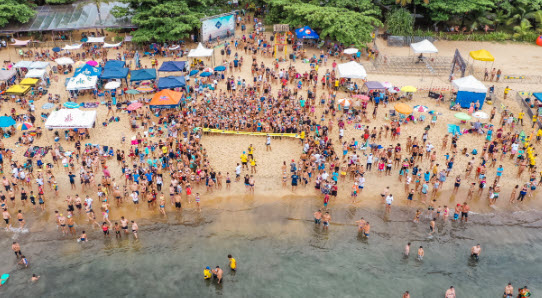As the summer season arrives, many people eagerly anticipate spending time outdoors, enjoying the sunshine and fresh air. Whether it’s a trip to the beach or a leisurely stroll in the park, these outdoor activities provide a welcome break from the monotony of daily life. However, this year, a tiny yet formidable adversary has emerged, threatening to put a damper on our summer fun—the dreaded no-see-ums.
No-see-ums, also known as biting midges or sand flies, are minuscule insects that measure only about 1 to 3 millimeters in length. Their name is derived from their ability to bite and irritate without being easily seen by the naked eye. These tiny pests are prevalent in coastal areas, marshes, and other humid environments, making beaches and parks prime locations for their activities.
The presence of no-see-ums can turn a pleasant outing into an itchy nightmare. Their bites often result in intensely itchy red welts that can persist for days. The bites can be particularly bothersome for those with sensitive skin or individuals who have allergic reactions to insect bites. Moreover, these insects are notorious for their persistent nature, often attacking in large swarms, making it nearly impossible to escape their irritating bites.
The sudden surge in no-see-um activity this summer has caught many beachgoers and park enthusiasts by surprise. Experts suggest that several factors may have contributed to the increased population of these pests. The warming climate, changes in weather patterns, and the proliferation of their breeding grounds have likely played a significant role in their surge.
So, how can you protect yourself from these tiny terrors and still enjoy your time outdoors? Here are a few tips to help you stay safe and itch-free:
- Wear protective clothing: When venturing into areas where no-see-ums are prevalent, it’s essential to cover up as much as possible. Opt for lightweight, loose-fitting clothing that covers your arms and legs. Wearing long sleeves, long pants, and socks can act as a barrier and prevent these insects from reaching your skin.
- Apply insect repellent: Use an effective insect repellent that contains ingredients like DEET, picaridin, or oil of lemon eucalyptus. Apply it to exposed areas of your body, following the instructions on the product label. Be sure to reapply as necessary, especially if you’ve been swimming or sweating.
- Choose the right time: No-see-ums are most active during dawn and dusk. If possible, plan your outdoor activities for other times of the day when these pests are less likely to be buzzing around.
- Utilize protective screens: If you’re visiting an area known for heavy no-see-um activity, consider setting up protective screens around your outdoor spaces. This can help create a bug-free zone, allowing you to enjoy the outdoors without the constant annoyance of these tiny insects.
- Be mindful of your surroundings: No-see-ums are attracted to stagnant water and moist environments, as these serve as ideal breeding grounds. Avoid areas with standing water, such as marshy areas or pools of water near the beach. Keep an eye out for potential breeding sites and take necessary precautions to minimize their presence.
While no-see-ums can certainly be a nuisance, it’s important to remember that they are a natural part of the ecosystem. They serve as a food source for birds, fish, and other creatures, contributing to the delicate balance of nature. Nevertheless, by taking some simple precautions

